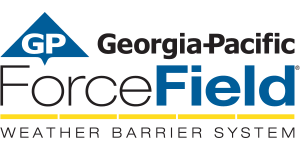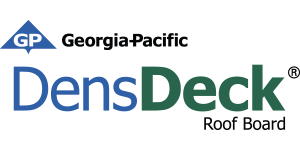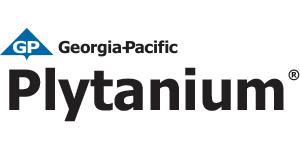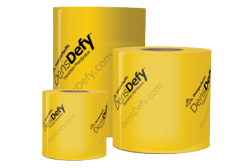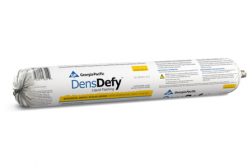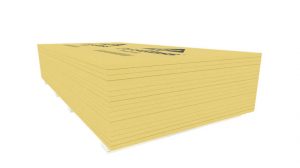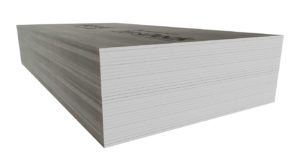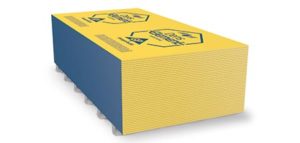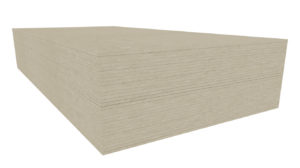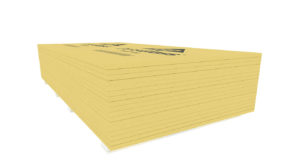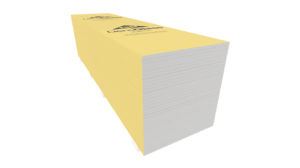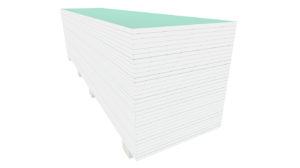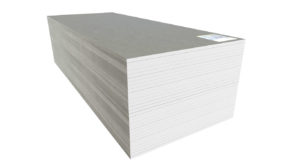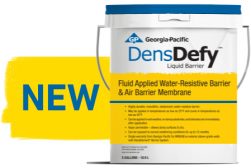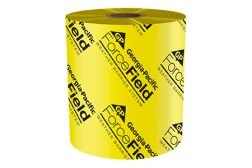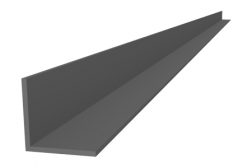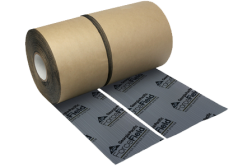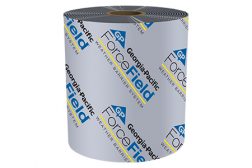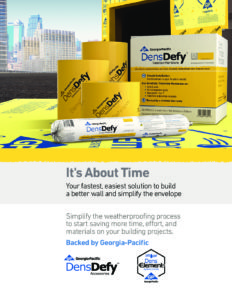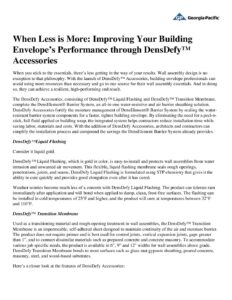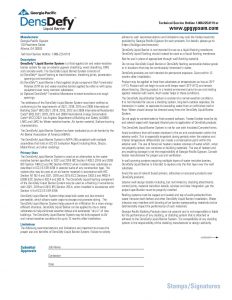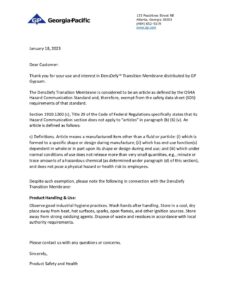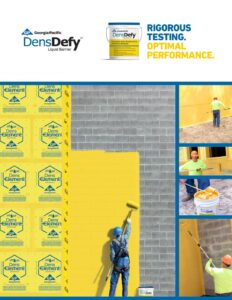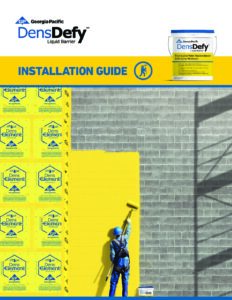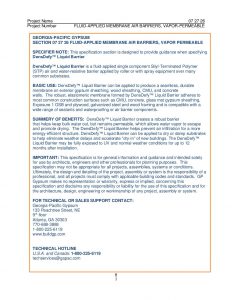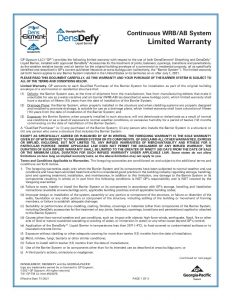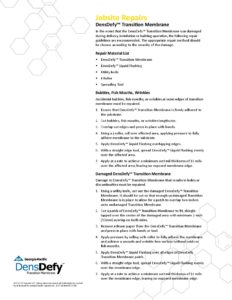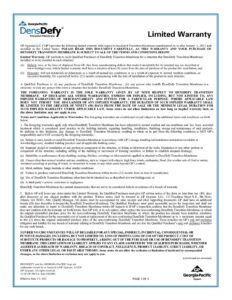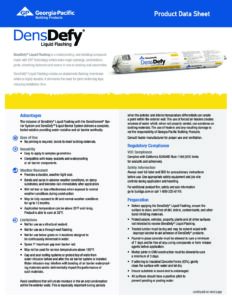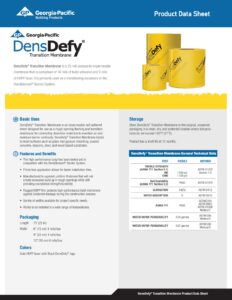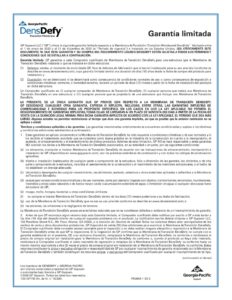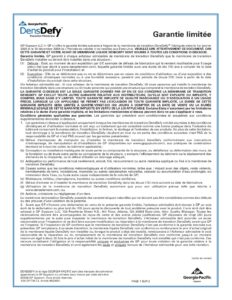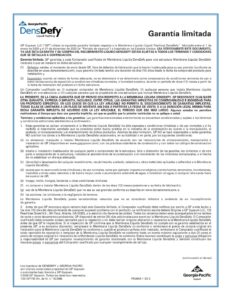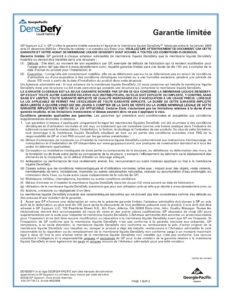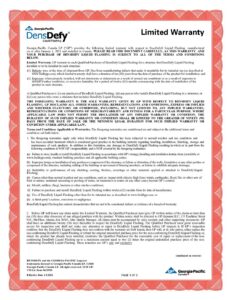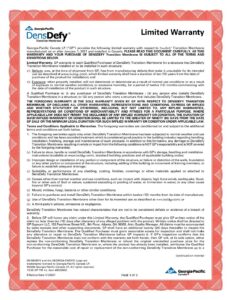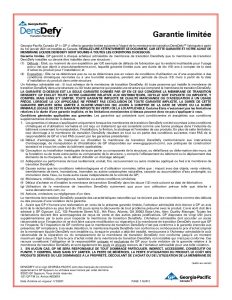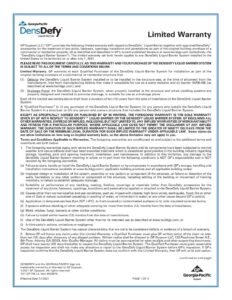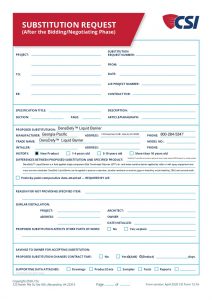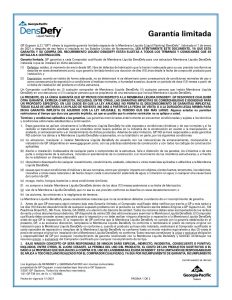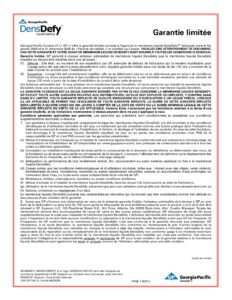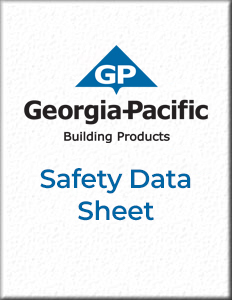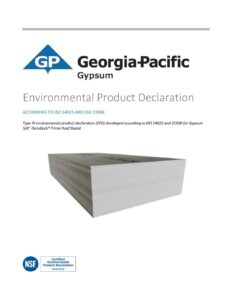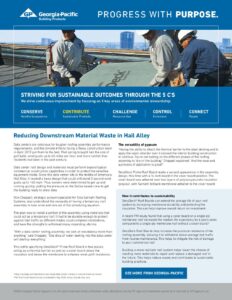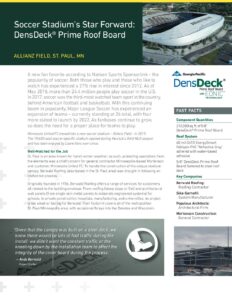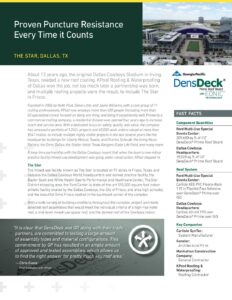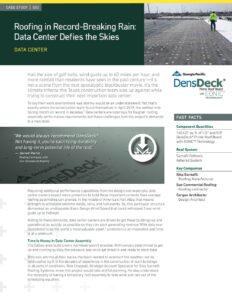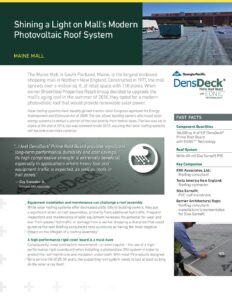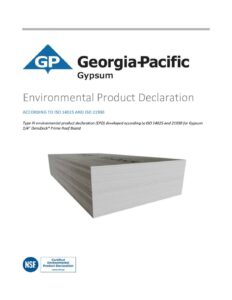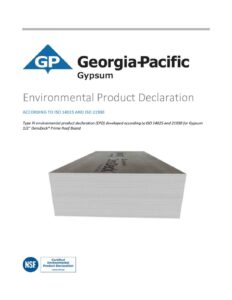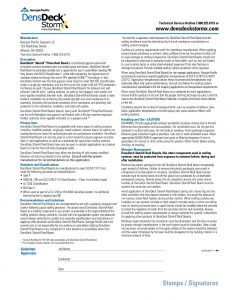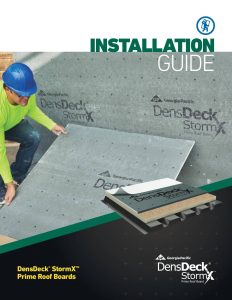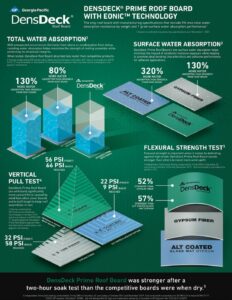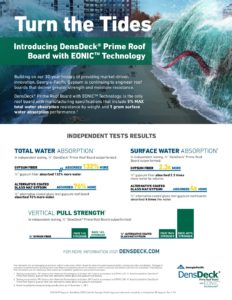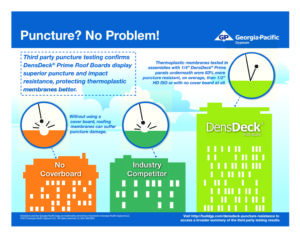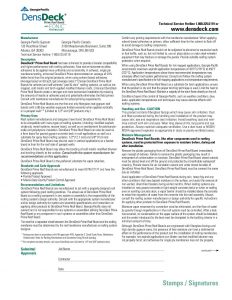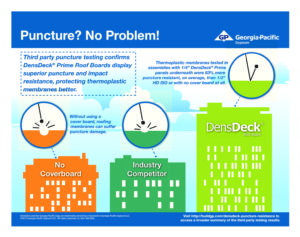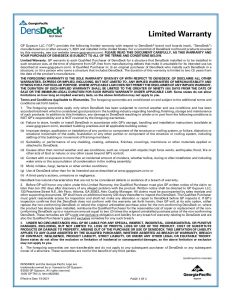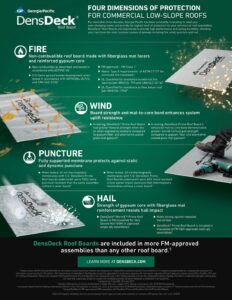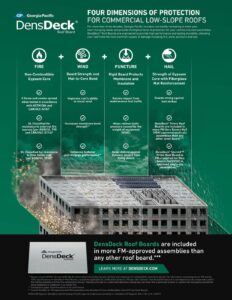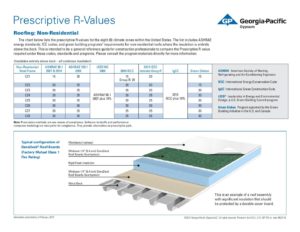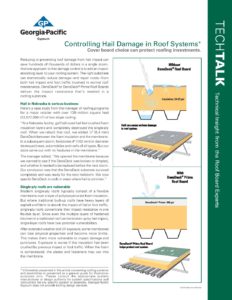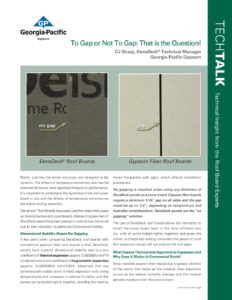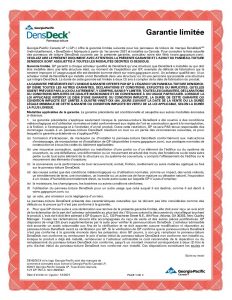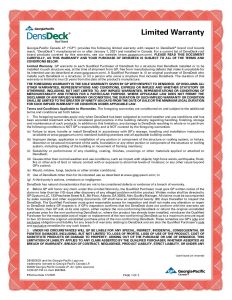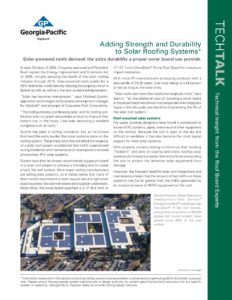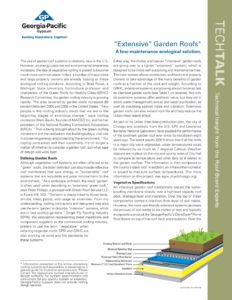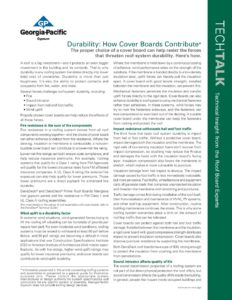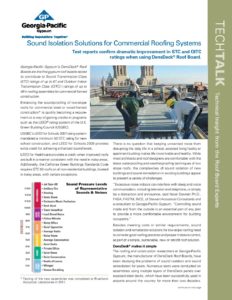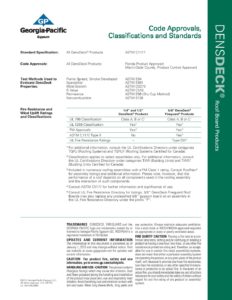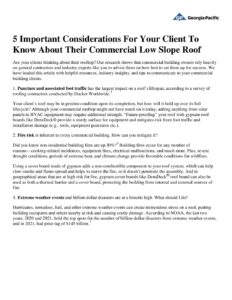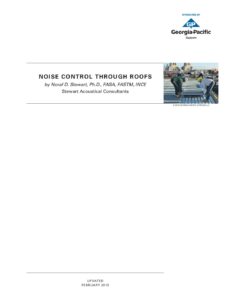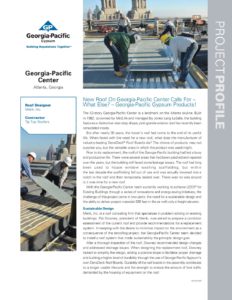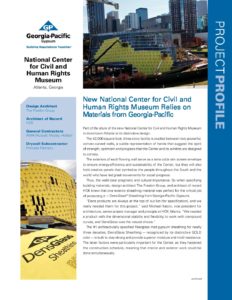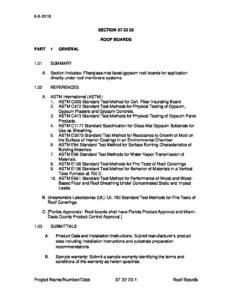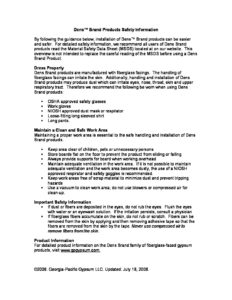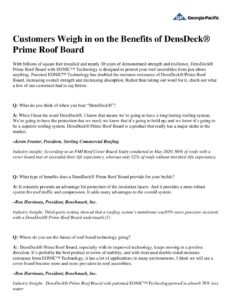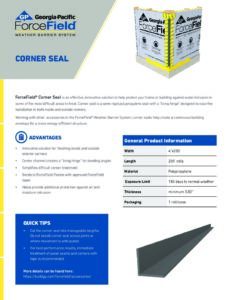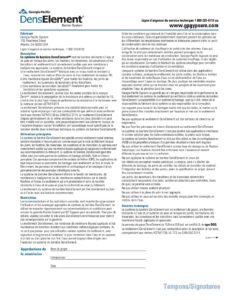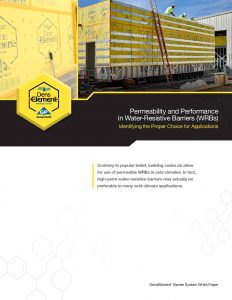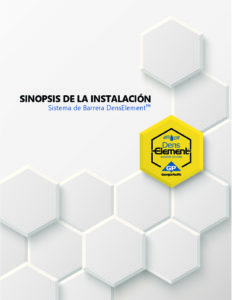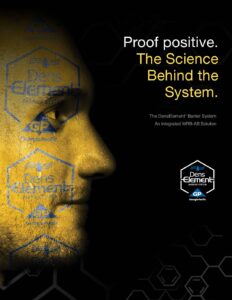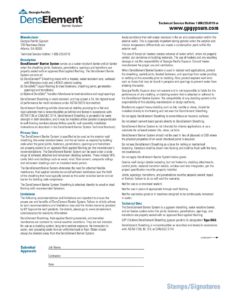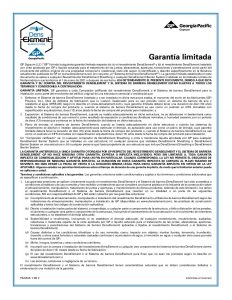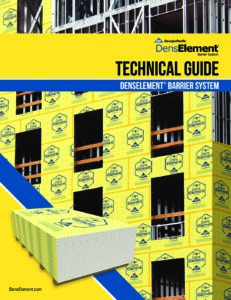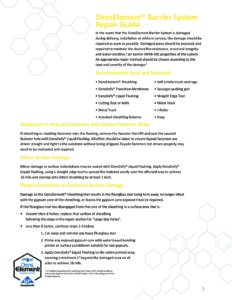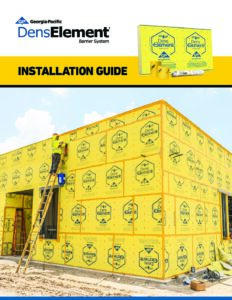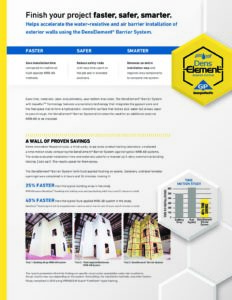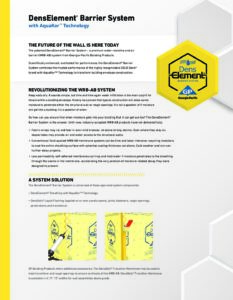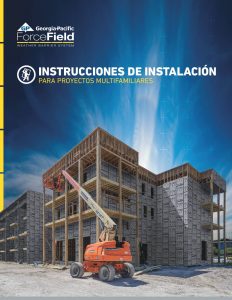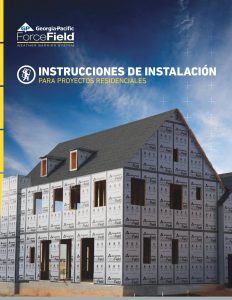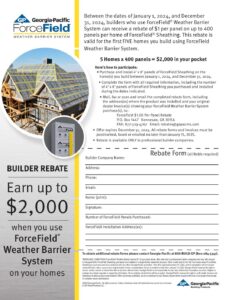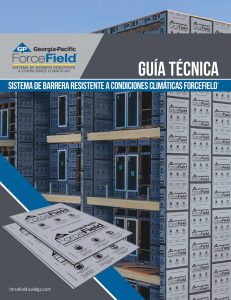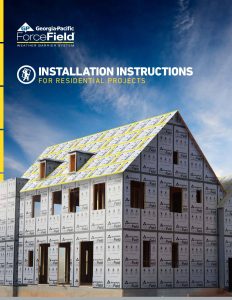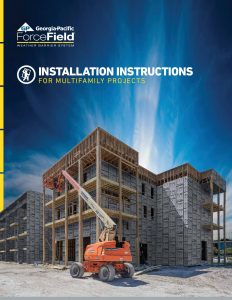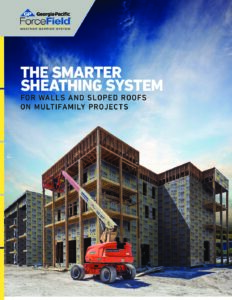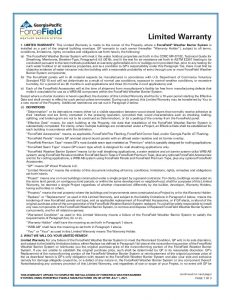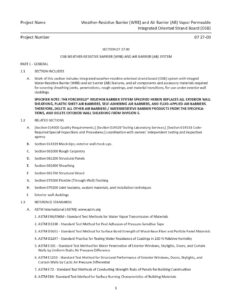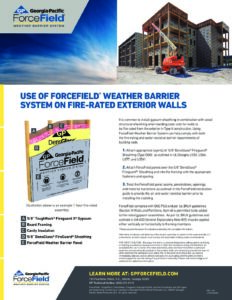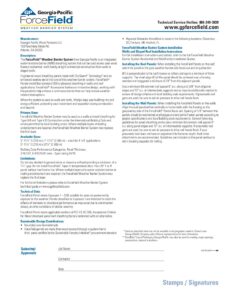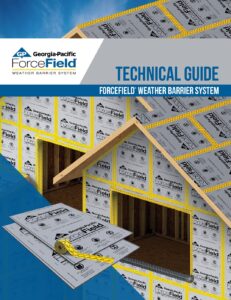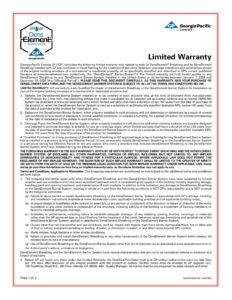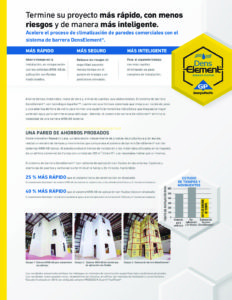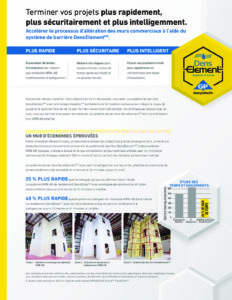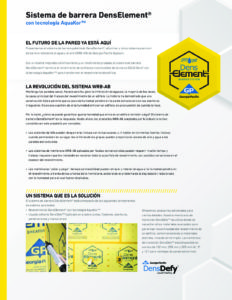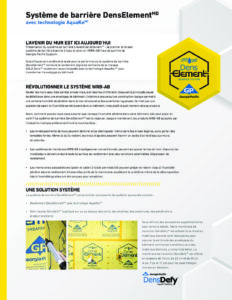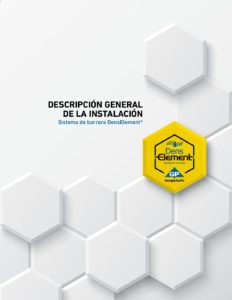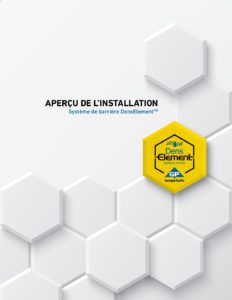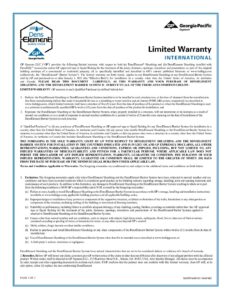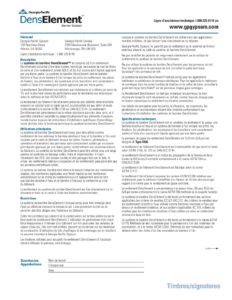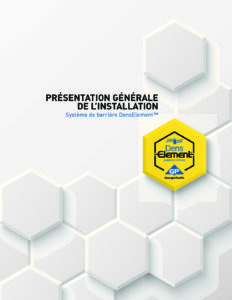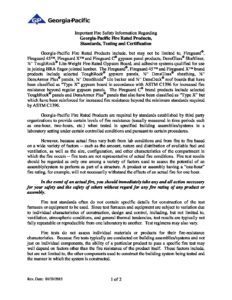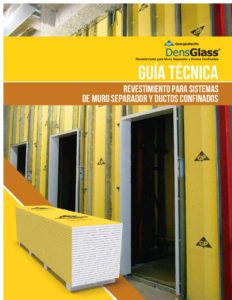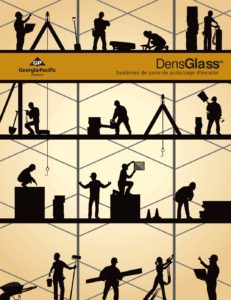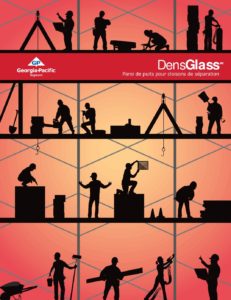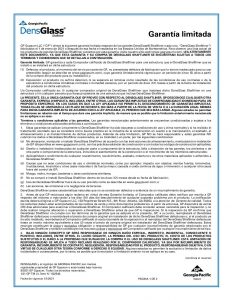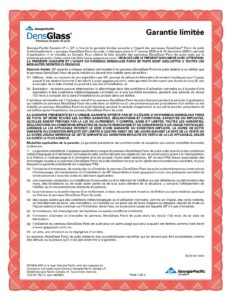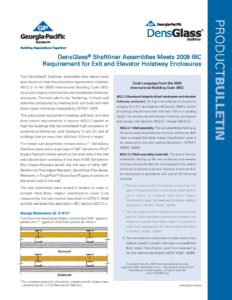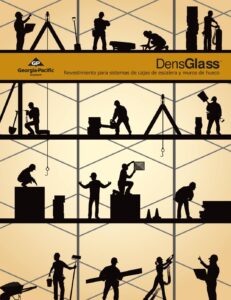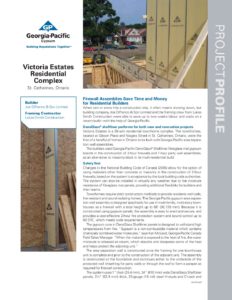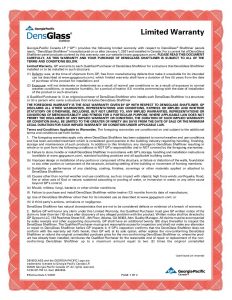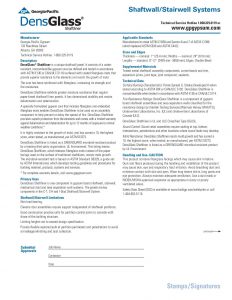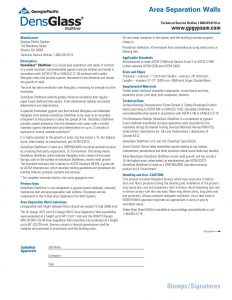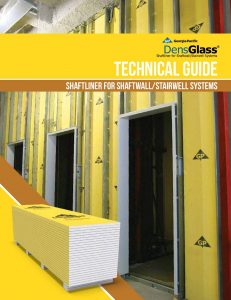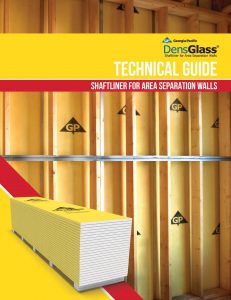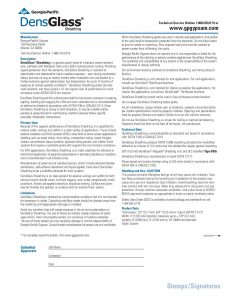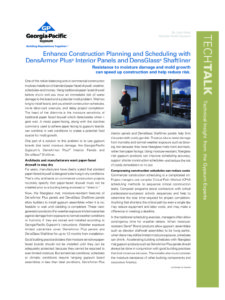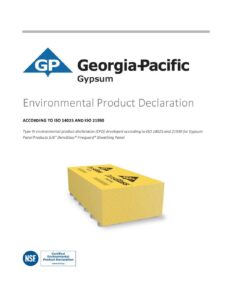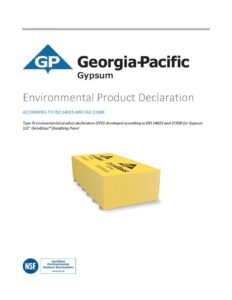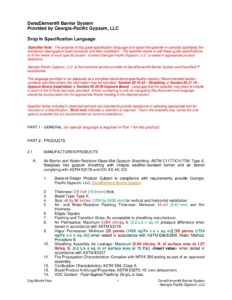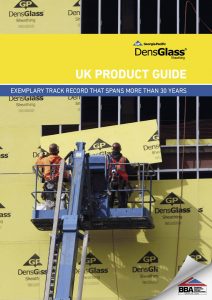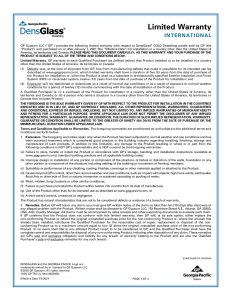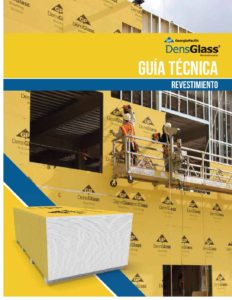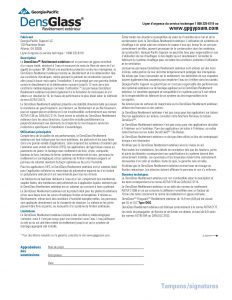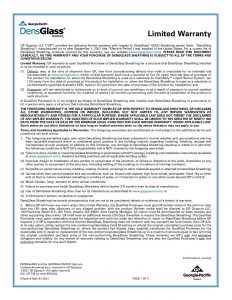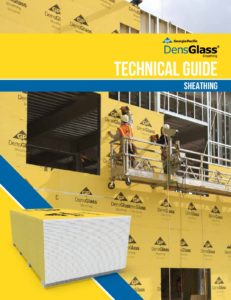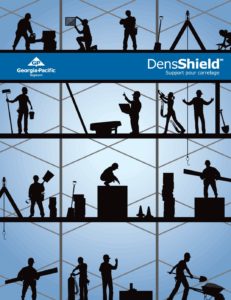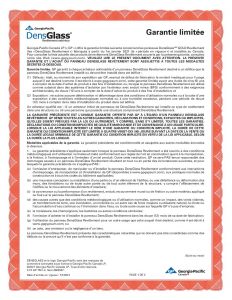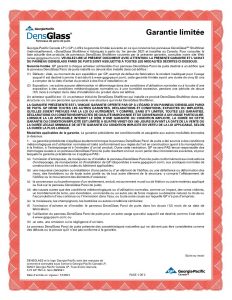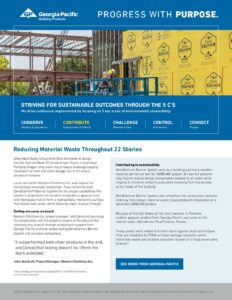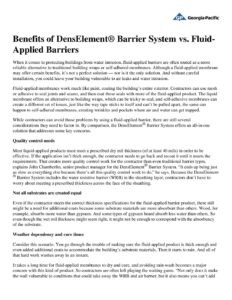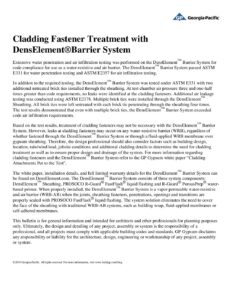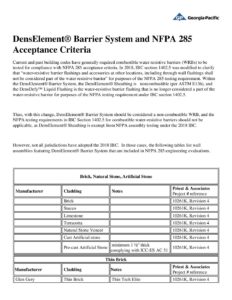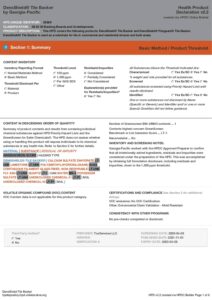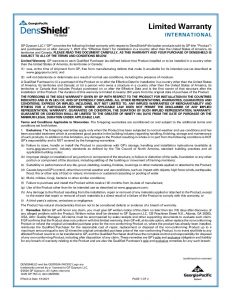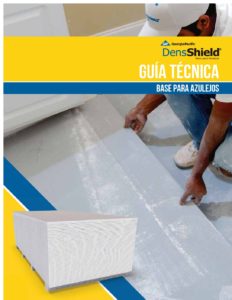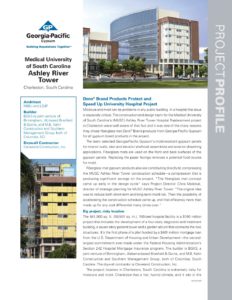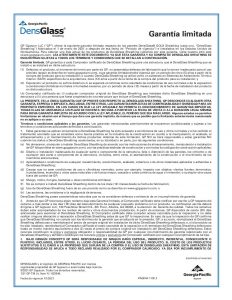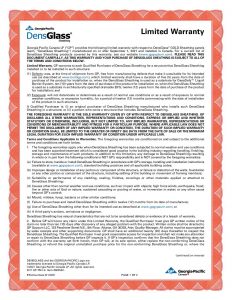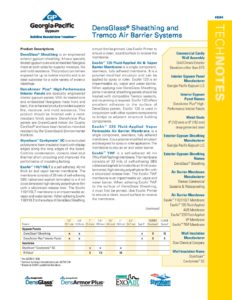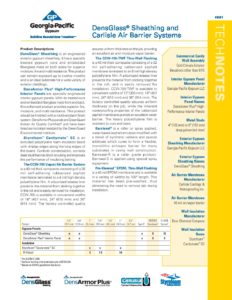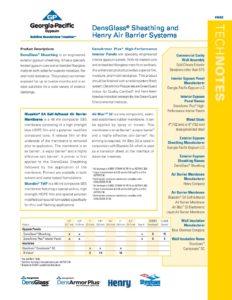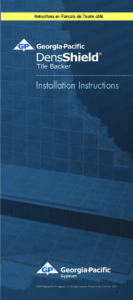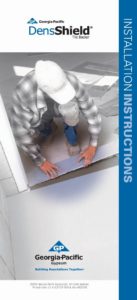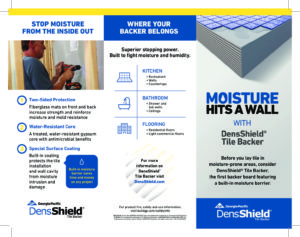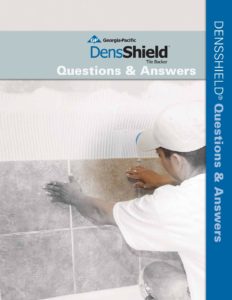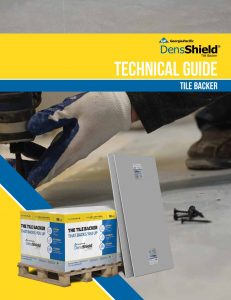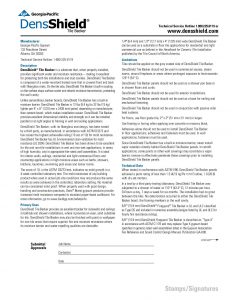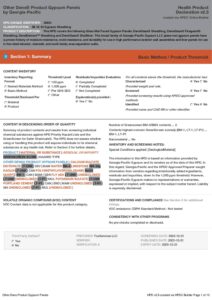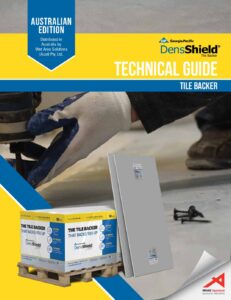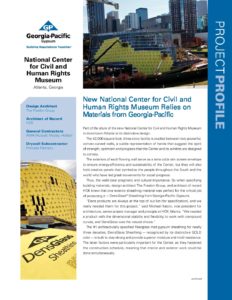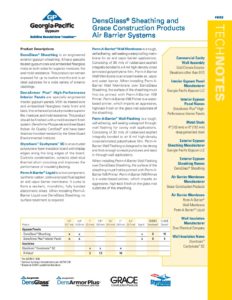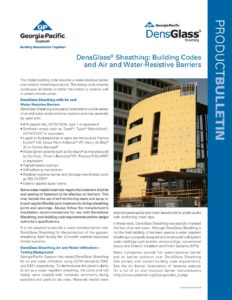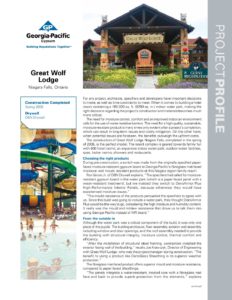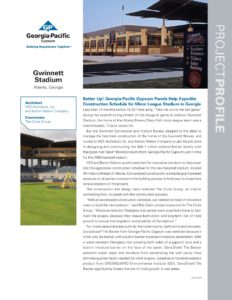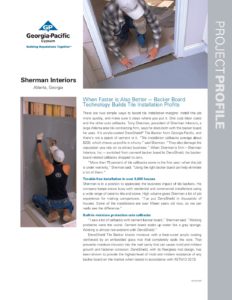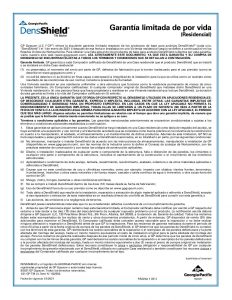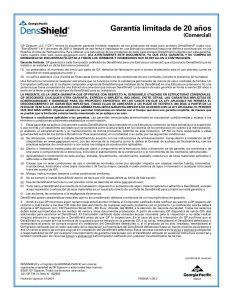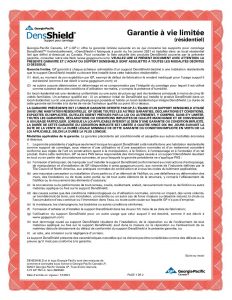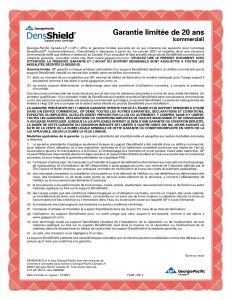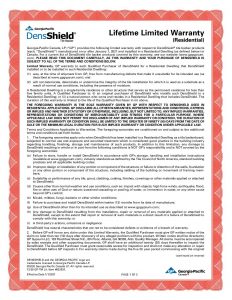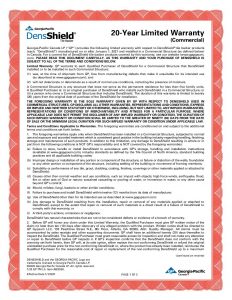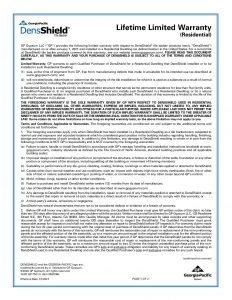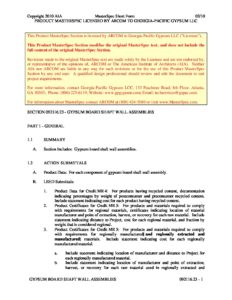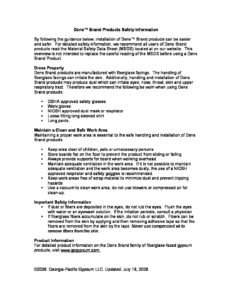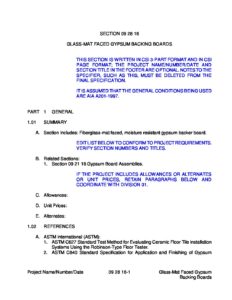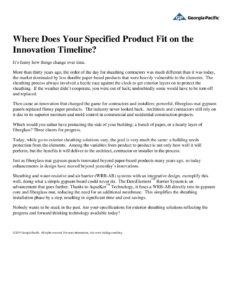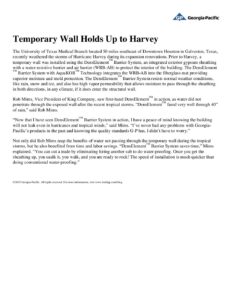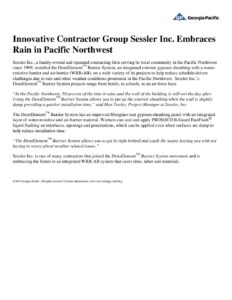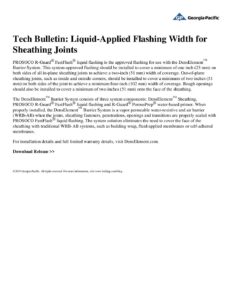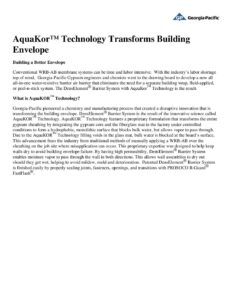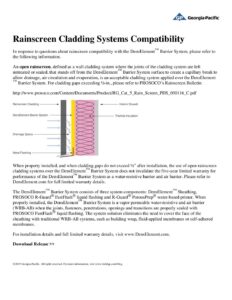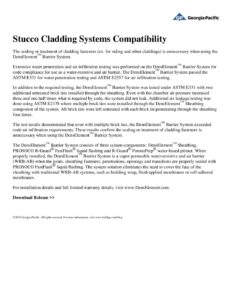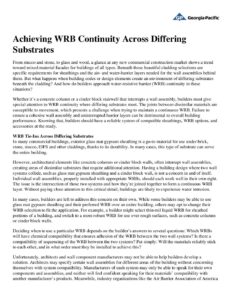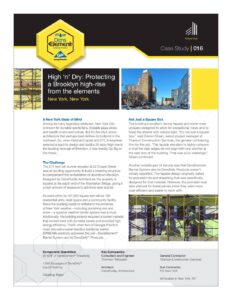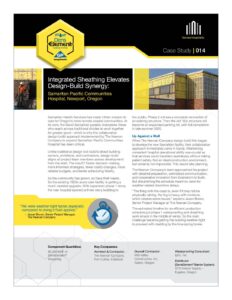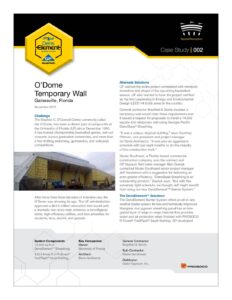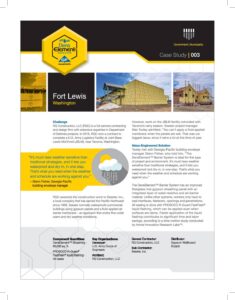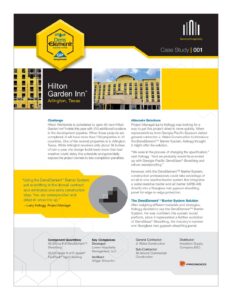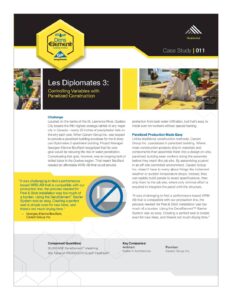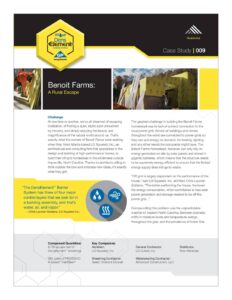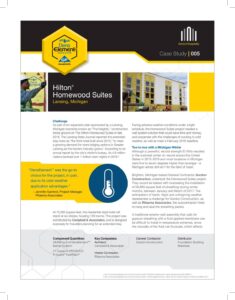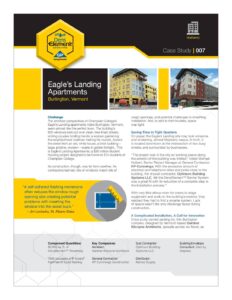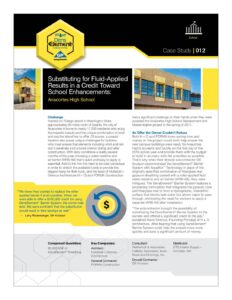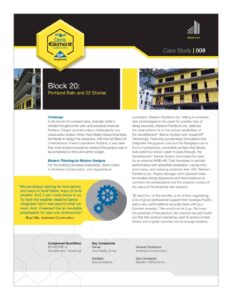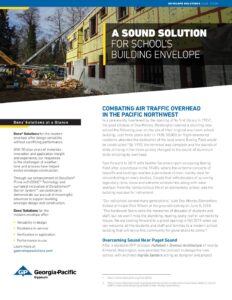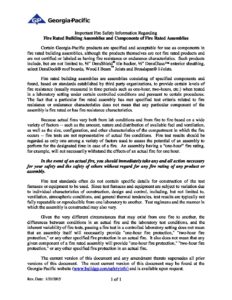No results found, try expanding your search filters.
What is a radiant barrier?
A radiant barrier is a layer of reflecting aluminum placed in an airspace to block radiant heat transfer between a heat-radiating surface (such as a hot roof) and a heat-absorbing surface (such as conventional attic insulation and your ceilings).
DensShield® tile backer and DensArmor Plus® interior panel differences:
DensArmor Plus® interior panels do not have a water-stopping surface coating. The coating on DensShield® tile backer provides a water barrier to stop moisture from penetrating into the product and wall. DensShield tile backer is made to be used in wet areas such as showers and tub areas as a substrate for ceramic tile. DensShield tile backer is manufactured to meet ASTM C 1178. DensArmor Plus interior panels feature a tapered edge for joint finishing while DensShield tile backer has a square edge.
Must an additional moisture barrier be supplied and installed when using DensShield Tile Backer panels?
No. The grey face (tile side) of DensShield Tile Backer has a heat cured acrylic coating which is a built-in moisture barrier and vapor retarder so that no additional moisture barrier is required. In fact, an additional moisture barrier to the back side of DensShield Tile Backer is NOT recommended. Prior to the tile installation it is permissible to apply a fluid applied membrane to the face of DensShield Tile Backer for enhanced moisture resistance.
What are the similarities and differences in DensArmor Plus® Interior Panels and DensShield® tile backer?
Both use fiberglass mats as the back facer material. When installed against the wall framing, both products provide a fiberglass mat surface facing the wall cavity that resists possible mold growth on the back of the panel. DensShield® tile backer and DensArmor Plus® panels both have cores that are moisture resistant, manufactured to ASTM C 1396, section 7 specifications.
How is DensShield Tile Backer fastened in place?
No special or unique fasteners are required to fasten DensShield Tile Backer panels in place. For wood studs: galvanized roofing nails, rust-resistant drywall screws or bugle head deck screws. Fasteners should be long enough to penetrate at least 3⁄4 (19 mm) into the wood framing members. For metal framing: a variety of rust-resistant screws can be used.
Where else can I use radiant barrier sheathing?
You may also find that radiant barriers can expand the use of space in your home. For instance, un-insulated, unconditioned spaces such as garages, porches, and workrooms can be more comfortable with radiant barriers. Because radiant barriers help keep attics cooler, the space is more usable for storage. You can also use radiant barrier sheathing on exterior, south-facing walls that have uninterrupted sun exposure. In a wall application, the foil side of the radiant
barrier sheathing must be installed with the foil facing the outside. The foil must also have minimum 3/4″ airspace in front of it to be effective. This can be accomplished by using furring strips on the outside of the sheathing to create the 3/4″ airspace between the sheathing’s foil face and the siding, brick or other material used on the exterior of the wall. Be sure to check with your local building codes for compliance in the installation of any siding product. You may also want to check with your siding manufacturer for the use of their siding in conjunction with radiant barrier sheathing.
Can Thermostat radiant barrier sheathing damage my shingles?
The Reflective Insulation Manufacturers Association (RIMA) has published Technical Bulletin #103, which reports that in peak summer conditions, the temperature of asphalt shingles is increased only an average of 2 to 5° F over radiant barrier roof sheathing. This is not a significant temperature rise and most shingle manufacturers have indicated that it does not affect their shingle warranties. However, you may wish to review your warranty to be sure it will not be voided. Contact your shingle manufacturer directly with any questions and ask for any changes in coverage to be provided in writing.
How do I install Thermostat radiant barrier sheathing?
Apply Thermostat radiant barrier sheathing with the reflective (foil) side down towards the attic, directly to the roof framing. For radiant barrier sheathing to be effective long-term, the reflective side must have a minimum 3/4″ air space in front of the foil face to properly reflect radiant heat. This applies to both attic areas and cathedral type ceilings.
Can DensShield® Tile Backer be used in floor applications?
Yes. Both 1 ⁄4” (6.4 mm) and 1 ⁄2” (12.7 mm) DensShield® Tile Backer can be used in floor applications. Both of these thicknesses passed the Robinson Floor Test, the industry standard floor test for residential and light commercial ratings. The Robinson Floor Test (ASTM C627) is designed to determine how a tile assembly holds up under extreme wear and weight conditions. DensShield Tile Backer achieves the same light commercial rating as cement and fiber cement backers.
Are special tile setting materials needed to work with DensShield Tile Backer panels?
No. DensShield Tile Backer requires the same type of setting materials as any other backer board. No special mastics or thin-sets are required. To set tile, use a latex-Portland cement mortar, or other products recommended by the mortar manufacturer. Follow the tile setting manufacturer’s instructions for applying tile setting material. Dry-set or thin-set latex-modified mortars are most commonly used with DensShield Tile Backer and cement backers. Use only latex-modified mortars in floor applications.
Can DensShield Tile Backer be used in non-tile wet area applications?
Yes. In many applications, DensShield Tile Backer is used for its moisture barrier and moisture-resistant qualities for non-tiled walls and ceilings. There are several methods for finishing the panel depending on the environment. The environments of non-wet, high humidity and wet areas are described in the DensShield Tile Backer technical brochure. Each environment has its own finishing recommendation. A finishing method must never be used in a more severe environment than described.
Can I install DensShield Tile Backer either parallel or perpendicular to the wall framing?
Yes. The flexural strength of DensShield Tile Backer panels is approximately the same in both parallel and perpendicular directions. This allows wall and ceiling applications to be installed either parallel or perpendicular to the supporting members and results in fewer panel joints. DensShield Tile Backer can be installed over both wood framing and steel stud construction by spacing fasteners 6” (152 mm) o.c. along studs for wood or a minimum 20-guage (33 mils) steel framing.*
*For equivalent and effective guage steel studs, we have no evaluation or installation recommendations.
Is the acrylic coated side of DensShield® Tile Backer installed face out?
Yes. The DensShield® Tile Backer panel should be positioned next to framing with the acrylic coated (grey) side facing away from studs. Apply mortar or mastic and tile to the acrylic coated (grey) side of DensShield Tile Backer panels. The built-in acrylic coating stops moisture penetration at the surface.
Can I use Thermostat radiant barrier sheathing on vaulted ceilings or metal roofs?
Yes, Thermostat radiant barrier sheathing can be used in both types of construction as long as you maintain a minimum 3/4″ airspace for the foil surface. In both cases, the foil face should be installed facing down.
How much can I save by using Thermostat radiant barrier sheathing?
Energy usage varies according to many factors, including individual preferences and the fluctuation of energy costs in general. The amount of energy consumed is directly related to:
- The house cooling system, which includes insulation levels, roof color, thermostat settings, tightness of the building envelope, climate conditions, design and location of the house, size of house, efficiency of cooling equipment and other factors.
- The percentage contribution of heat transfer through the ceiling to the home’s cooling load. Cooling load is the amount of heat the air conditioner has to remove to sustain an adequate temperature in the living areas. Tests done by the Department of Energy show that ceiling heat gains represent about 12 to 25 percent of a home’s total cooling load.
- Since everyone’s home and lifestyle are different, and energy costs differ from area to area, we can’t calculate your exact savings from using Thermostat radiant barrier sheathing on the roof. However, it is reasonable to expect that Thermostat radiant barrier sheathing can save you somewhere between 8 – 17% of your annual cooling energy consumption in the Southeast.
What are the biggest benefits of using Thermostat radiant barrier sheathing in attics?
- Attic temperatures can be lowered by up to 30°F in the peak summer cooling season.
- Up to 17% decrease in energy consumption since the cooling system can work more efficiently due to lower attic temperatures.
- Increase in operational efficiency of cooling equipment because cooler attic temperatures allow attic mounted air conditioning systems and ductwork to operate more efficiently.
- Increased utilization of home spaces including garages, attics, porches and other spaces that do not have climate control but stay cooler and more comfortable thanks to Thermostat radiant barrier sheathing.
If I use Thermostat radiant barrier sheathing, do I still need insulation?
Yes. Thermostat radiant barrier sheathing is designed to work with, not in lieu of, standard attic insulation. Conventional insulations such as fiberglass, cellulose, foam and others do not insulate against radiant heat transfers.
Is ToughRock® Shaftliner listed in the same fire-rated assemblies as DensGlass® Shaftliner?
ToughRock Shaftliner is listed in assemblies with the UL type designation TP-6. DensGlass® Shaftliner is listed in assemblies with the UL type designation DGUSL. Please consult the specific assembly for permitted products and details. For additional information concerning fire ratings and fire safety, go to www.buildgp.com/safetyinfo.
DensShield Tile Backer seems softer than cement boards. Does it have the same floor ratings?
DensShield Tile Backer is rated for residential and light commercial floors. 1⁄4” (6.4 mm) DensShield Tile Backer panels have a compressive strength of approximately 1200-1500 lbs psi, and 1⁄2” (12.7 mm) DensShield Tile Backer has a compressive strength of between 450 and 600 lbs psi. That means that it would typically take a load of 450 to 600 lbs psi to start to crush 1⁄2” (12.7 mm) DensShield Tile Backer. When a load is applied to the floor tile, the tile distributes the load over its entire area.
Should the fasteners be countersunk?
No. Fasteners should be flush with the coated surface and are not to be countersunk.
Can I use DensShield® Tile Backer in fire-rated wall assemblies?
Yes. 5⁄8” (15.9 mm) DensShield® Fireguard® Tile Backer is manufactured to meet Type X requirements (per ASTM C1178) and can be substituted in any generic assemblies using a 5⁄8” (15.9 mm) Type X gypsum board. This permits the use of numerous 1-hour and 2-hour assemblies for both wood and metal frame construction. Transition to regular 5⁄89 (15.9 mm) Type X board is also minimized. For additional information concerning fire ratings and fire safety, go to www.buildgp.com/safetyinfo.
Is ToughRock Shaftliner® mold resistant?
ToughRock Shaftliner incorporates moisture-resistant paper but is not tested specifically for mold resistance. If you require a shaftliner product that has been tested for mold resistance in accordance with ASTM D3273, consider using DensGlass® Shaftliner. Please note that ToughRock® Shaftliner is not designed for exposure to constant high-moisture conditions or direct water.”
Does ToughRock® Shaftliner have recycled content?
The paper facers are made with 100% recycled paper. The total amount of recycled content depends on the manufacturing location.
Does ToughRock® Shaftliner carry a limited warranty for exposure to weather conditions?
Georgia-Pacific Gypsum does not offer a limited warranty for ToughRock Shaftliner for exposure to weather conditions. If you require a product that does have a limited warranty for exposure to normal weather conditions, consider using DensGlass® Shaftliner.


